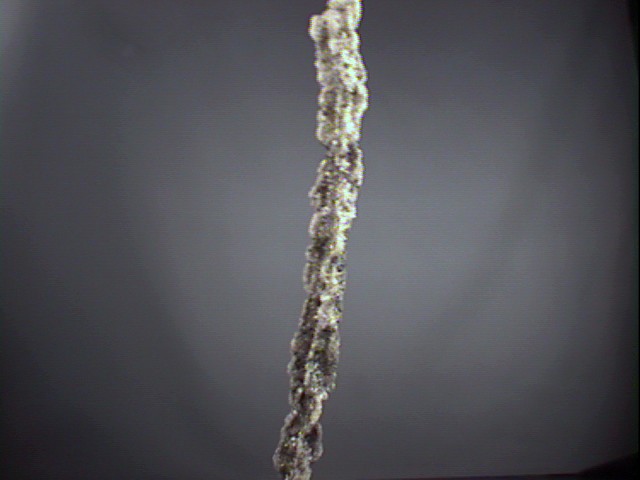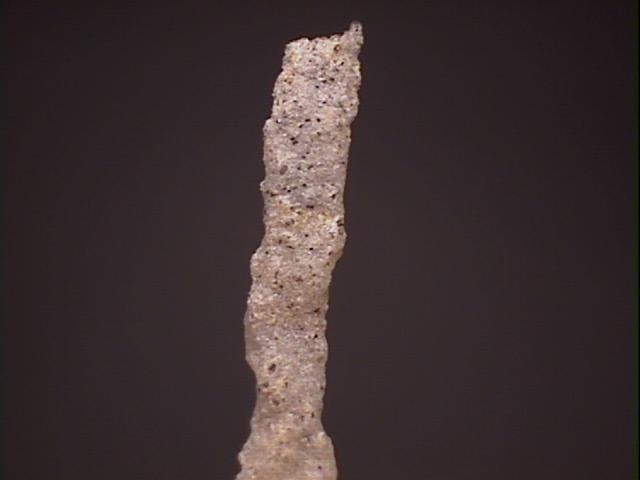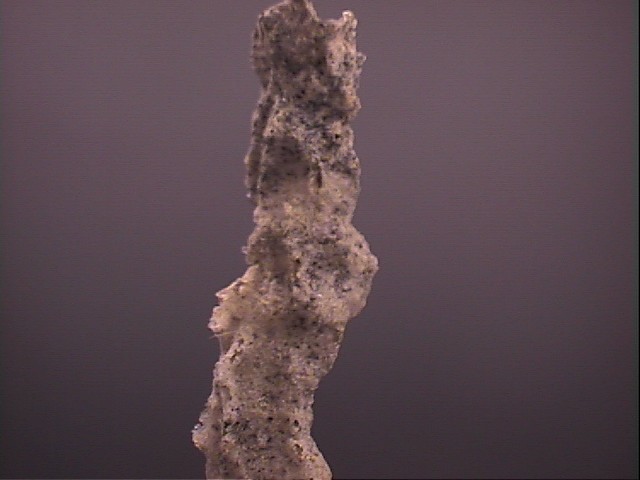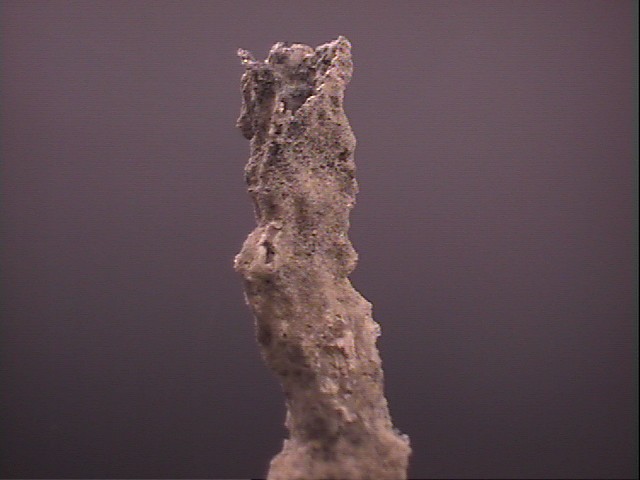
LECHATELIERITE
Specimen lec-4
$ 45.00
Dims: 6.12x0.54x0.35" (15.54x1.36x0.88cm)
Wt: 0.38oz (10.7g)
Al Kufra, Libia
This is a collapsed fulgarite. a fossil lightning strike that collapsed from a hollow tube of molten glass (lechatelierite) to a flattened tube before it cooled. A loupe is needed to examine the glassy (and transparent) lechatelierite, exposed at the edges of the specimen. Most of the specimen's appearance is due to the bits of sand and soil frozen into the surface of the lechatelierite as it cooled, giving it a gray appearance due to black, white, and gray components.












